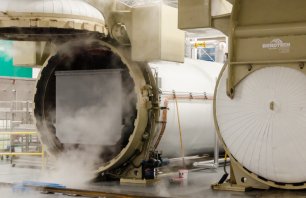Every year, the opioid crisis takes a heavy toll across the Canada. From January 2016 to March 2025, there was a total of 49,445 opioid-related poisoning hospitalizations reported in Canada. In the first quarter of this year (January to March), 1,218 opioid-related poisoning hospitalizations were reported, of which 71% were accidental.
Healthcare organizations and facilities play a crucial role in combating the opioid crisis. One important step is ensuring the responsible and secure disposal of controlled substances to prevent misuse and diversion. The use of drug sequestration units, like CsRx®, can help prevent these drugs from falling into the wrong hands.
Stericycle's controlled substance wastage containers provide a valuable solution and offer an effective, simple, and safe way to handle drug waste. These specially designed containers help make it easy to securely capture and deactivate controlled substance waste right after patient care, reducing the risk of drugs being misused. Once collected, the containers are incinerated, not only preventing drug diversion but also keeping harmful substances out of our water systems—better than flushing them down the drain. Stericycle’s CsRx® Controlled Substance Waste Service includes the following components:
- Interactive Online Training Module: Easy-to-follow training for your staff on safe medication waste handling.
- Onsite Installation: Secure, lockable wall brackets installed by our expert team.
- Prefilled Containers: Each comes ready with agents to deactivate, deter misuse, and solidify contents for safe storage and transport.
- Ongoing Support: Proactive container management for full-service customers.
- Final Disposal by Incineration: Destruction by incineration ensures waste is destroyed safely and responsibly.
With these comprehensive measures, the CsRx® containers can help you mitigate the risk of drug waste diversion at your facility and send your waste for incineration, protecting individuals and the environment from potential harm that may result from disposing of the drugs down the drain.
How to Properly Dispose of Controlled Substances
Health Canada categorizes a controlled substance are any type of drug that has a higher-than-average potential for abuse or addiction. Health Canada categorizes such drugs based on their potential for abuse or addiction. Controlled substances range from illegal street drugs to prescription medications.
Witnessed Destruction
Health Canada requires all local destructions to be witnessed by a practitioner, pharmacist, a pharmacy intern, or a pharmacy technician.
Record Keeping
Pharmacists, practitioners, or those in charge of hospitals are no longer required to send destruction authorization requests to Health Canada in order to go ahead with local destruction.
Practitioners, pharmacists, or person in charge of a hospital that proceed with local destruction are required to keep a record of the unserviceable stock they are subjecting to local destruction. The record must include:
- the brand name or common name of each narcotic, controlled drug, or targeted substance that is being destroyed;
- the quantity and strength per unit of the narcotic, controlled drug, or targeted substance that is being destroyed;
- the method of destruction used; and
- the date that the destruction took place.
Each record must be signed and dated by the pharmacist, practitioner, or person in charge of the hospital who carried out the destruction and by the witness. Both individuals have to sign and print their names on a joint statement which indicates they witnessed the substance destruction and that it was altered or denatured to the point that its consumption was rendered impossible or improbable. Records are required to be kept for two years.
Learn more about Stericycle’s CsRx® Controlled Substance Waste Service.



